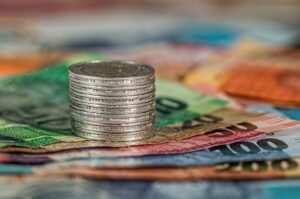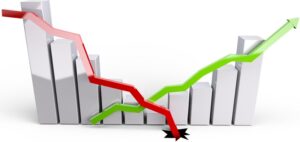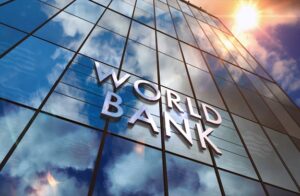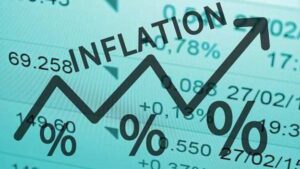
Consumer prices in the euro area in June increased by 8.6% in annual terms, according to the final data of the Statistical Office of the European Union.
The indicator is the maximum since the beginning of the data calculation.
Thus, inflation in the region accelerated compared to 8.1% in May.
The final data coincided with the preliminary ones. Analysts polled by Trading Economics also did not expect a revision in the preliminary estimate.
The growth of consumer prices compared to the previous month amounted to 0.8%, as in May.
Inflation is over four times the European Central Bank’s (ECB’s) target of 2%. The next meeting of the ECB will take place on Thursday, and it is likely that as a result of it, key interest rates will be raised immediately by 50 basis points, and not by the expected 25 bp.
According to Eurostat, energy resources jumped in price by 42% compared to June last year. Food, alcohol and tobacco increased in price by 3.7%, manufactured goods – by 4.3%, services – by 3.4%.
Consumer prices excluding food and energy rose 3.7% year-on-year last month from 3.8% in May.
In the European Union, inflation in June accelerated to 9.6% in annual terms from 8.8% in May.
The lowest inflation in the EU was recorded in Malta (6.1%), France (6.5%) and Finland (8.1%), the highest – in Estonia (22%), Lithuania (20.5%). ) and Latvia (19.2%).

The growth of consumer prices in Ukraine in June 2022 accelerated to 3.1% from 2.7% in May, returning to the level of April, the State Statistics Service (Gosstat) reported on Friday.
In June last year, inflation was 0.2%, so in annual terms, in June this year, it rose to 21.5% from 18% in May, 16.4% in April, 13.7% in March, 10.7% – in February and 10% – in January, the agency said.
Core inflation over the past month also increased to 1.6% from 1.4% in May, which, however, is less than 3% in April and 3.8% in March. However, taking into account 0.4% in May 2021 in annual terms, it increased to 14.9% from 13.7% in May, 13% in April, 10.5% in March, 8.2% – at the end of February and 7.6% – at the end of January.
Since the beginning of this year, for its first half of the year, inflation in Ukraine amounted to 17.4%, and the base – 11.4%, said the State Statistics Service.
In the consumer market in June, prices for food and non-alcoholic beverages increased by 3.2%. Eggs increased the most (by 17.2%). Prices for sugar, rice, cereal products, pork, vegetables, poultry meat increased by 10.9-4.2%. At the same time, prices for beef and fruits fell by 1.1%.
Prices for alcoholic beverages and tobacco products increased by 2.4%, including for alcoholic beverages – by 3.4%, tobacco products – by 1.4%.
Clothes and footwear fell in price by 1.4%, in particular, clothes – by 1.8%, shoes – by 0.9%.
Transportation prices rose by 11.2%, mainly due to a rise in the price of fuel and lubricating oils by 21.3%, as well as road and rail passenger transport by 7.4% and 4.5%, respectively.
In the field of communications, prices increased by 0.9%, which is associated with a rise in the cost of postal services and telephone equipment by 3.0%.
As reported, in 2021 inflation in Ukraine rose to 10% from 5% in 2020 and 4.1% in 2019, while core inflation rose to 7.9% against 4.5% a year earlier.

Consumer price growth in Ukraine in May 2022 slowed down to 2.7% from 3.1% in April and 4.5% in March, but exceeded 1.6% in February and 1.3% in January , the State Statistics Service (Gosstat) said on Thursday.
In May last year, inflation was 1.3%, so in annual terms, in May this year, it rose to 18% from 16.4% in April, 13.7% in March, 10.7% in February and 10% – following the results of January, the department indicated.
Core inflation over the past month also declined to 1.4% from 3% in April and 3.8% in March. However, taking into account 0.7% in May 2021 in annual terms, it increased to 13.7% from 13% in April, 10.5% in March, 8.2% in February and 7.6% – at the end of January.
Since the beginning of this year, for its first five months, inflation in Ukraine amounted to 13.9%, and the base – 9.6%, said the State Statistics Service.
The National Bank of Ukraine, as reported by its head Kirill Shevchenko, expected an increase in inflation in May up to 17%.
In the consumer market in May, prices for food and non-alcoholic beverages rose by 2.7%. Most of all (by 14.3% and 11.5%) rice and fruit rose in price. Prices for fish and fish products, grain processing products, vegetables, soft drinks, and pasta increased by 5.9-3.2%. At the same time, prices for eggs fell by 21.2%, beef, sugar, and poultry meat fell by 2.5–0.9%.
Prices for alcoholic beverages and tobacco products increased by 3.9%, incl. for alcoholic beverages – by 6.4%, tobacco products – by 1.5%.
The decrease in prices in the healthcare sector by 0.9% was primarily due to the reduction in the cost of pharmaceutical products by 1.8%.
Transportation prices increased by 10.2% mainly due to the increase in the price of fuel and lubricating oils by 22.8%, as well as road passenger transport fares – by 6.7%.
In the field of communications, prices increased by 1.0%, due to a rise in the cost of postal services by 6.7% and telephone equipment by 2.7%.
As reported, in 2021 inflation in Ukraine rose to 10% from 5% in 2020 and 4.1% in 2019, while core inflation rose to 7.9% against 4.5% a year earlier.

The World Bank has downgraded its inflation forecast for Ukraine to 20% by the end of 2022 from its April forecast of 15% inflation, Arup Banerji, World Bank Regional Country Director for Eastern Europe (Belarus, Moldova and Ukraine), has told Interfax-Ukraine.
“Inflationary pressures are rising. Consequently, at this stage, inflation is expected to continue rising and could reach 20% in December against 15% in our April forecasts,” Banerji said in an exclusive interview with Interfax-Ukraine.
Banerji said that the rise in inflationary pressure is particularly because of the need to cover budgetary requirements in March-May.
“International partners have acknowledged the financial challenges, thus they have committed around $20 billion in financial assistance to Ukraine. Despite these significant commitments, the timing of repayments will continue to be critical in order to meet Ukraine’s current needs,” the World Bank regional director said.
The World Bank has also maintained its forecast for a sharp contraction of 44% in Ukraine’s GDP in 2022.
“However, owing to the length of the war, when hostilities continue in several regions of Ukraine, we cannot be sure of our preliminary forecasts for a recovery in the medium term relatively,” Banerji said.

Consumer price growth in Ukraine in April 2022 slowed to 3.1% from 4.5% in March, but exceeded 1.6% in February and 1.3% in January, the State Statistics Service (Gosstat) reported on Tuesday.
In April last year, inflation was 0.7%, so in annual terms in April this year it rose to 16.4% from 13.7% in March, 10.7% in February and 10% in January, the agency said.
Core inflation also eased to 3% last month from 3.8% in March. However, taking into account 0.7% in April 2021 in annual terms, it increased to 13% from 10.5% in March, 8.2% in February and 7.6% in January.
Since the beginning of this year, for its first four months, inflation in Ukraine amounted to 10.9%, and the base – 8.1%, said the State Statistics Service.
The National Bank of Ukraine, as reported by its head Kirill Shevchenko, expected an increase in inflation in April to 15.9%.
As reported, in 2021 inflation in Ukraine rose to 10% from 5% in 2020 and 4.1% in 2019, while core inflation rose to 7.9% against 4.5% a year earlier.

Inflation in Ukraine in annual terms in April may increase to 15.9% from 13.7% in March, this forecast was given by the head of the National Bank of Ukraine Kirill Shevchenko, referring to the NBU estimates based on web-scraping (method collecting prices from online supermarkets).
“In a war, it is impossible to avoid price increases … at the end of the year it (inflation) may exceed 20%. This is a significant level of price growth, but controlled. And such indicators are not comparable with 2015, when inflation reached 60% in some months,” wrote he is in the column for NV.Business.
Shevchenko stressed that the NBU has significant experience in fighting inflation.
“In general, in world history there were no cases when a country entered into a state of martial law, having such a highly developed financial system and monetary policy,” he added.
The head of the National Bank noted that while market mechanisms will have a limited impact on the market, the regulator will keep price growth by fixing the exchange rate and maintaining part of the restrictions.
“But as soon as monetary transmission channels start working and uncertainty decreases, we will return to the inflation targeting regime, which at one time helped to overcome the same 60% inflation,” Shevchenko said.
According to him, the National Bank will gradually restore the forecast cycle and again begin to apply the discount rate to reduce inflation to the target of 5% and keep inflation expectations under control.
As the State Statistics Service reported, consumer price growth in Ukraine in March 2022 accelerated to 4.5% from 1.6% in February, 1.3% in January and 0.6% in December. In March last year, inflation was 1.7%, so in annual terms, in March this year, it rose to 13.7% from 10.7% in February and 10% in January.